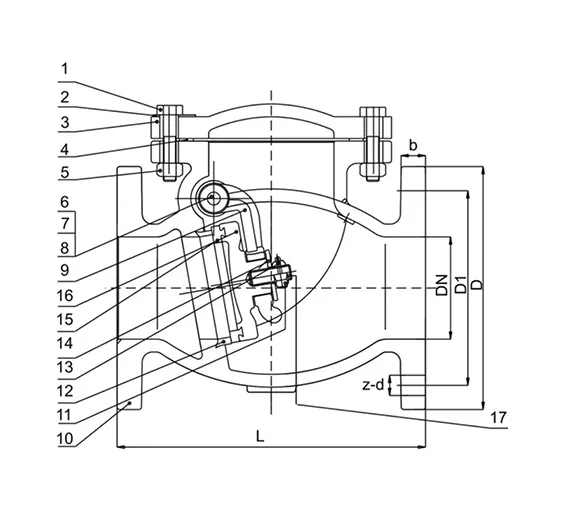Dec . 05, 2024 00:42 Back to list
teflon butterfly valve
Understanding Teflon Butterfly Valves A Comprehensive Overview
In the world of fluid control systems, butterfly valves have long been known for their simplicity, versatility, and efficiency. Among the various materials used in their manufacturing, Teflon-coated butterfly valves are increasingly gaining popularity due to their unique properties and advantages. This article will explore what Teflon butterfly valves are, how they work, their benefits, applications, and considerations for choosing the right valve for your needs.
What is a Butterfly Valve?
A butterfly valve is a type of quarter-turn valve that controls the flow of fluid through a pipe. It consists of a disc (the butterfly) that rotates around a central axis. When the disc is parallel to the flow, the valve is open; when it's perpendicular, the valve is closed. The design allows for quick operation and makes it suitable for various applications in industries such as water treatment, oil and gas, chemical processing, and HVAC systems.
The Role of Teflon
Teflon, a brand name for polytetrafluoroethylene (PTFE), is a synthetic fluoropolymer known for its non-stick properties and high resistance to chemicals. When applied to butterfly valves, Teflon acts as a lining or coating that enhances the valve's performance. This non-stick surface prevents the accumulation of solids and debris, ensuring smooth operation and prolonging the valve's lifespan.
Advantages of Teflon Butterfly Valves
1. Chemical Resistance One of the most significant advantages of Teflon butterfly valves is their ability to withstand corrosive chemicals. PTFE is inert and does not react with most chemical substances, making it ideal for handling aggressive media in various settings.
2. Low Friction The Teflon coating reduces friction between the disc and the valve body, resulting in less wear and tear over time. This characteristic ensures that the valve operates more smoothly and requires less force to open and close.
3. Temperature Tolerance Teflon butterfly valves can operate under a wide range of temperatures. They maintain their performance in both high-heat and cryogenic conditions, making them suitable for diverse industrial applications.
teflon butterfly valve

4. Durability The robust nature of Teflon means that the valve can withstand harsh operating conditions, including extreme pressures and temperatures. This durability reduces the need for frequent replacements, leading to cost savings in the long run.
5. Easy Maintenance With their non-stick properties, Teflon butterfly valves are less likely to accumulate buildup, simplifying maintenance procedures. This characteristic allows for fewer scheduled shutdowns, enhancing overall productivity.
Applications of Teflon Butterfly Valves
Teflon butterfly valves find applications in various industries due to their robust characteristics. Some common applications include
- Chemical Processing Used in the transport of hazardous chemicals, Teflon butterfly valves prevent contamination and ensure safety. - Food and Beverage The non-reactive nature of Teflon makes these valves suitable for food processing plants, where hygiene standards are critical. - Pharmaceuticals In pharmaceutical manufacturing, the purity of ingredients is vital, and Teflon valves help prevent cross-contamination. - Water Treatment Teflon butterfly valves are employed in water treatment facilities, providing excellent resistance to chlorine and other disinfectants.
Considerations When Selecting Teflon Butterfly Valves
When choosing Teflon butterfly valves, several factors must be considered to ensure optimal performance
- Size and Diameter Ensure that the valve fits the piping system's specifications and flow requirements. - Pressure Ratings Check the pressure ratings to determine if the valve can handle the system's operational pressures without failure. - Temperature Range Confirm that the valve can operate efficiently within the expected temperature range of the application. - Actuation Method Consider whether manual or automated actuation is required, as this will impact the valve's installation and operation.
Conclusion
Teflon butterfly valves represent a cornerstone of modern fluid control systems, offering a combination of durability, chemical resistance, and ease of maintenance. Their unique properties make them an invaluable component in industries ranging from chemical processing to food manufacturing. Understanding their benefits and applications can help engineers and project managers make informed decisions, ensuring efficient and reliable operations.
Share
-
priming-a-pump-with-a-foot-valve-with-strainerNewsAug.23,2025
-
the-importance-of-a-y-strainer-in-pump-protectionNewsAug.23,2025
-
stainless-steel-ball-check-valve-for-high-purity-applicationsNewsAug.23,2025
-
common-applications-for-wafer-type-butterfly-valvesNewsAug.23,2025
-
seat-options-for-a-12-inch-knife-gate-valveNewsAug.23,2025
-
the-lifespan-of-a-typical-dismantling-jointNewsAug.23,2025


